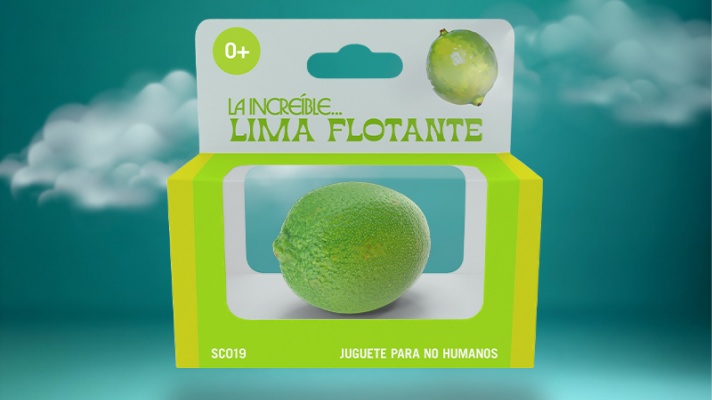Descripción de la Exposición
“Here We Are in Croydon” is the title of a unique painted lithograph made by Howard Hodgkin in 1979. Stopping in Tulsa on a trip to see David Hockney in Los Angeles, Hodgkin’s friend George Lawson made the remark that would become the painting’s title in a suburban living room. Lawson was a London society fellow and the remark was likely sarcastic, but Hodgkin’s flat adoption of it renders it miles more interesting. Oklahoma suburbs and London suburbs are the same. There are echoes of atmosphere all over the world, and we may be in many places at once. We are connecting ourselves to the world now more than ever before, networking ourselves, forming our identity through futuristic means of communication. Contemporary art is an act of threading it all together, of understanding perception and culture from the personal to the global. This exhibition of four international artists, each represented by a small group of new works, shows what this search for wider perception looks like.
Ruairiadh O’Connell (b. 1983, Aberdeen) is a sculptor with a fond instinct for hard conceptualism, ruthlessly instilled in formative education at the Städelschule, Frankfurt, who also cannot resist beauty, images, and objects. The faceted wall-relief forms debuting in this exhibition derive from O’Connell’s visions as he took his three small children walking up and down the block for their daily fresh air in the depths of 2020. Darting in and out of parked cars, they doubled, bent and fragmented in the facets of shiny steel. Also on display, the artist’s shimmering rectangles are resin-covered casts of pattern drawings for 18th-century silks. These works’ curious, hypermodern, optical pop honor the original intent of the textiles’ design, which was to flow and flatter grand, dancing Georgian women. They ripple and won’t sit still. O’Connell makes one aware of what the brain and eye do together.
Belén Rodríguez (b. 1981, Valladolid) has long engaged with materials that are highly sensitive to technique and highly responsive to the environment. Five tubular forms, hand-made from hand-dyed fabric, are currently animated by coastal winds over the beach of this year’s Biennale Internationale in Anglet, in far southwest France. Belén builds through interrogation, bringing imagery to life, making it real — both constructing and deconstructing. The works in this exhibition draw inspiration from the imagery of books such as 1688’s Treatise on Japanning and Lacquering, cultural artefacts from a moment in trade and expanding global interest that created a vague, mushed-together understanding of the orient. Belén’s Japanning works, assembled from cut fragments of bleached and dyed fabric on rough home-made cotton stretchers, display the adoring, earnest inanity of chinoiserie and blow it up, returning its elegance to its elements, to the beauty of form outside of culture.
Gabriella Boyd (b. 1988, Glasgow) finds colour in her paintings through many translucent layers, which cause her scenes to feel emergent: since they cannot be planned in advance, they grow into tone and meaning as they are made. Boyd’s works in this exhibition, produced under recent conditions and clearly, if not explicitly, about them, are the product of careful listening, with narrative arriving through soulful, often solitary deliberation. In the largest canvas on display, a woman in a bed in a profoundly green room sprays a yellow mist on her face. A jagged window on the wall portrays a car wreck. It could be a portal, it could be a dream; the spray may have manifested this vision. Yet fragments of the scene float like petals into the woman’s lap. Boyd’s paintings address the subtleties of being a body, the space between bodies, the networks we build to grow stronger and smarter, and the tenderness of care and self-care. Boyd’s subjects may be alone in their worlds, but they are relatable — now more than ever — in their heightened senses.
Sula Bermúdez-Silverman (b. 1993, New York) examines the charge of materials both found and fundamental in order to understand how identity and memory is forged. Bermúdez-Silverman is an American, like many Americans, of mixed descent and multiple histories, and her wide-reaching sculpture freights cast salt, sugar and glass into curious domestic reliquaries, or collects neighbourhood trash trinkets into literal patchwork quilts of time and place. Her work is omnivorous in its search for forms that evoke the texture and shape of identity. An awareness of process in all her work reflects the ongoing process that is the construction of our full selves. The worn-out cast dollhouses in this exhibition are icons of domesticity, representing containment, somewhere where we may place our identity as we continue to figure it out.
Domestically, sensorially or culturally, Here We Are in Croydon is an exhibition of art about location, planting ourselves ten toes down in the world with honesty and intent while also looking up and realizing that our position in the world is provisional and entirely relative to the world we can find for ourselves.

Exposición. 16 abr de 2025 - 11 may de 2025 / Centro Botín / Santander, Cantabria, España

Formación. 08 may de 2025 - 17 may de 2025 / Museo Nacional Centro de Arte Reina Sofía (MNCARS) / Madrid, España